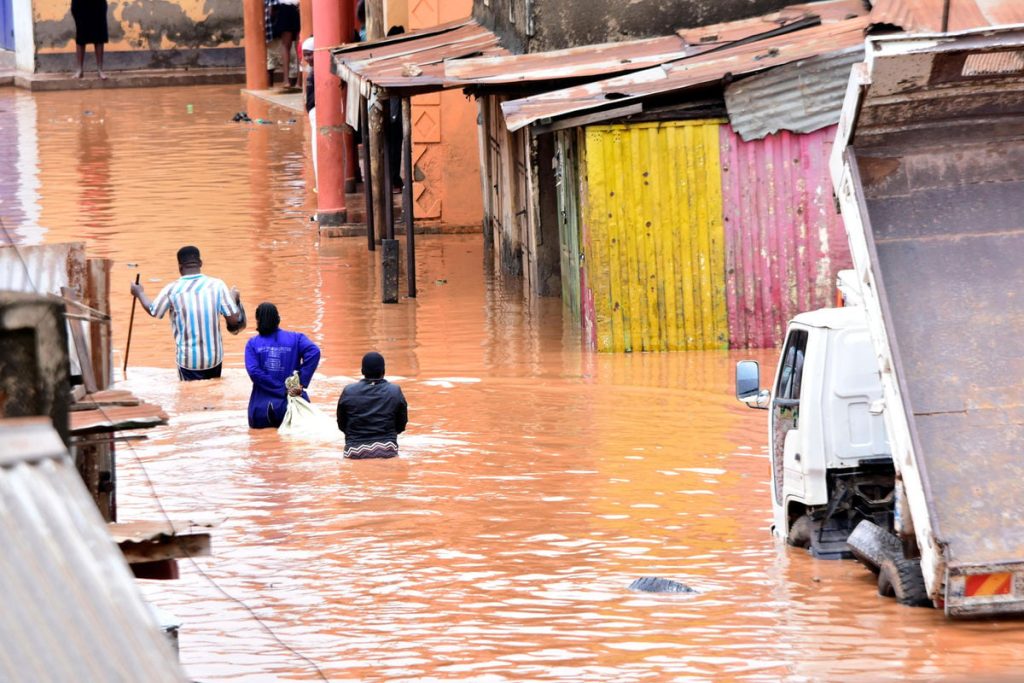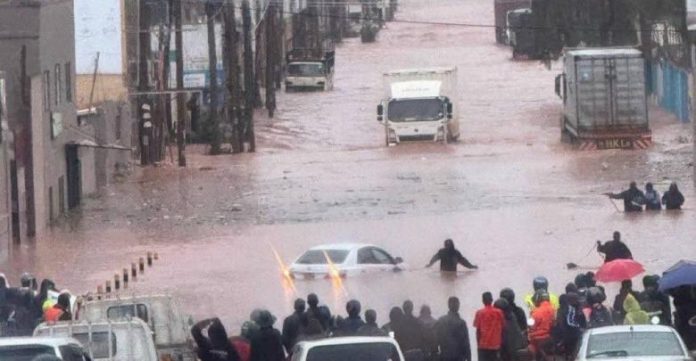Facebook Twitter Instagram Somali Magazine - People's Magazine
A devastating downpour swept through Uganda’s capital, Kampala, on March 26, 2025, leaving seven people dead and causing widespread destruction. The floods, which inundated homes, roads, and businesses, have reignited concerns about the city’s poor drainage systems and urban planning deficiencies, as residents grapple with the aftermath of the disaster.
The torrential rains began early Wednesday morning, triggering flash floods that overwhelmed several neighborhoods, including Kinawataka, Mulimira Zone, and Lutete Village. Kampala Metropolitan Police Deputy Spokesperson Luke Owoyesigyire confirmed the fatalities, which included two children, three-year-old Eliza Otim Kisa and 11-month-old Ochon Ochaka, who tragically drowned in their home in Mulimira Zone. Their mother, Rose Mary Lenunu, has been arrested on allegations of negligence, as neighbors claim she had left the children unattended—a recurring practice, according to reports.
Three other bodies were recovered from Kinawataka, while two additional victims were found in Lutete Village, Kasangati Town Council. Among the deceased was Bogere George, an employee of the U.S. Embassy in Kampala, who drowned while riding his motorcycle through flooded streets. The seventh victim, an adult male, has yet to be identified. All bodies have been transported to the City Mortuary in Mulago for postmortem examinations.
The floods caused significant property damage, with images and videos showing submerged vehicles and waterlogged roads across Kampala. Key infrastructure, including the Kampala-Jinja road section near Kyambogo University and the newly launched Queen’s Way flyover, was not spared. Residents of Kajumbi Zone in Lubaga Division waded through knee-deep water to reach their destinations, while emergency services scrambled to respond to multiple distress calls.
Authorities have attributed the flooding to a combination of factors, including encroachment on wetlands, poor drainage systems, and inadequate urban planning. Kampala’s rapid urbanization has exacerbated these issues, leaving the city vulnerable to extreme weather events. Environmental experts have long warned that the destruction of wetlands, which act as natural flood buffers, has significantly increased the risk of flooding in Kampala.

In response to the disaster, Kampala Metropolitan Police and the Fire Prevention and Rescue Services have deployed teams to assist affected residents and assess the damage. Owoyesigyire urged the public to take precautionary measures during heavy rains, including avoiding flood-prone areas and securing their homes. “We extend our deepest condolences to the affected families and urge residents to remain vigilant during this rainy season,” he stated.
The floods have also highlighted the need for urgent action to address Kampala’s infrastructure challenges. Urban planners and environmentalists have called for investments in modern drainage systems and the restoration of wetlands to mitigate future flooding. The government has pledged to review its urban development policies and prioritize climate resilience in its planning efforts.
Humanitarian organizations have stepped in to provide relief to affected families, distributing food, water, and medical supplies. However, access to some areas remains difficult due to the extent of the flooding. Aid agencies have emphasized the importance of long-term solutions to prevent similar disasters, including community education on disaster preparedness and sustainable urban development practices.
As Kampala begins the recovery process, the focus remains on supporting the victims and addressing the root causes of the city’s vulnerability to flooding. The tragedy serves as a stark reminder of the urgent need for coordinated efforts to build resilient cities capable of withstanding the impacts of climate change.

